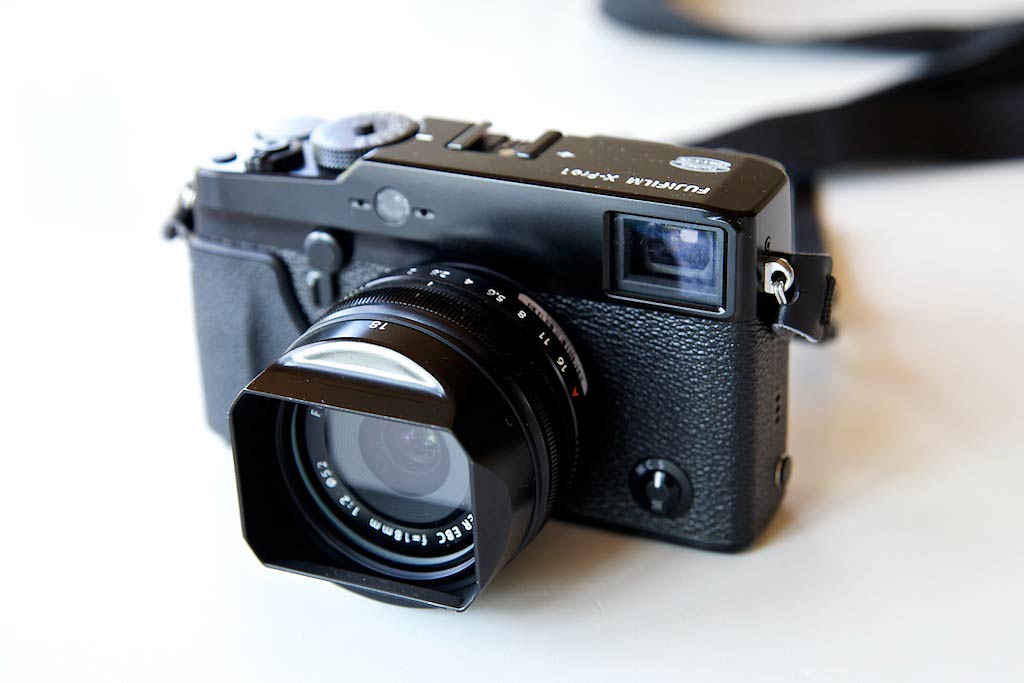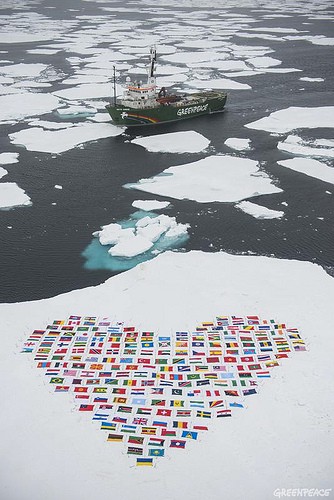It’s great to see real organizations posting regularly on Facebook and Twitter, writing blogs and being open and authentic in their communications.
Part of this is strategic — we’re moving away from the old days of a senior figure in the company or non-profit checking every communication that goes out of the place themselves and hiring PR people or ad agencies to polish a message until it shone (even if it didn’t represent the truth of the organization). Now, your audience wants to know what’s it really like behind the scenes, and for its employees to show some of their own personality and that of the organization.
Not all images are the same
But after the strategic comes the practical — you’ve got the plan and now you have to implement it well. So let’s assume that your organisation is writing blog posts, tweeting up a storm and using Pinterest like nobody’s business. You’re taking lots of photos at events or of products, but the problem is that none of the images look very much like the ones you see on the charity: water or ONE sites.
Poor photography makes you look amateurish, and turns the most lavish party into a dull-looking event or an attractive product into an e-Bay advertisement. NYC event organiser Jeremy Norman speaking in a Photoshelter blog post on event photography made it clear: “We’re very big on creating moments in the events — different opportunities for exciting photographs. Because if you’re going to spend one, two, three hundred thousand on an event you definitely want to have memories that are well shot and well photographed.”
You might not spending that much on your events, but the chances are you still need some better photography to create more impact and reflect your organization more positively. And if your blog posts have a more news feel to them, or you case studies tell particular stories, then you also need good photojournalism-style photographs to accompany that content. Finally, if you’re a fundraising organization, photography can play a key role in engaging potential donors.
I can make a very good case for employing a professional (and I’d love it if you’d call me, especially if you want documentary-type work or multimedia), but if that’s not an option here are some key tips to help you get better social media and blogging photos on your own.
1) You don’t need a good camera
Digital SLRs and other expensive bits of gear are really good at delivering great images, so long as the person using them knows what they’re doing. So rushing out and buying a new camera probably won’t help you if you’re going to leave it on auto-everything mode and just use the kit lens it came with. Good pans won’t make you a good cook.
Even with a point and shoot, or a cellphone camera, you can get better images if you concentrate on the points below (except the last one where I explain that you really do need a good camera for some kinds of shots).
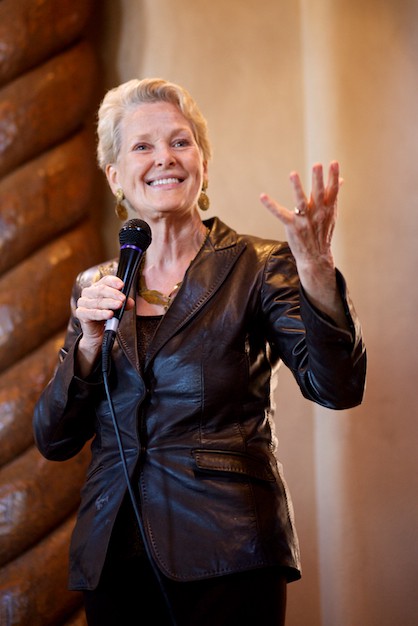
Swanee Hunt, founding director of the Women and Public Policy Program (WAPPP) at Harvard University’s Kennedy School of Government, and former United States Ambassador to Austria addresses a Democratic Party fundraiser in Santa Fe.
2) What’s your photo about?
This is the first question to ask as you’re picking up a camera to take an image. You probably know what it’s going to be a photo ‘of’, but that’s not what it’s ‘about’. What are you trying to show or tell with this image? You could take five different photos of a chair and say different things with all five.
Once you know what your’e trying to communicate with the image, it will help you decide what to put in and leave out. Do you want a candid moment, where the subject’s not aware of the camera, or are you going for a posed shot with everyone smiling, for example? What emotion are you trying to capture or communicate? It might not be a very complex idea, but if you’re just snapping away and hoping you get something good, it’s not very likely that you will.
3) Only show what’s important
Most amateur photographers leave too much in the frame when they’re taking a photograph. When you look at the world, your eye focuses on the subject you’re considering at that moment, and you don’t really notice the things around it. But when we look at a photograph, we tend to see everything that’s there, diminishing the visual importance of what’s supposed to be the main topic. So as your’e composing your image, make yourself look all around the frame and check that there’s a reason you’re including all the elements.
Sometimes things are improved by zooming in or getting closer to the main subject, removing some of the clutter. Other times if you move sideways, you’ll exclude a distraction like a sign or a trash can.
4) Head in a clean spot
Many of your photographs will probably include people. Try and make sure their heads aren’t in front of a distracting background. This could be the line of a wall running behind them, or a tree branch appearing to come out of the back of their heads. Watch for part of the background being darker than the people and part of it being lighter. A flat even background will make sure the viewer’s eye stays on the people — and your eye is naturally draw to the light areas of a frame.
5) Put people’s heads near the top of the frame
Unless there’s a good reason not to, try and put the top of people’s head’s near the top of the frame. This is the case whether it’s a tight shot only showing one person’s head and shoulders, or a group shot showing a bunch of people full-length. A lot of cameras’ main focus point is in the middle of the frame, so the tendency is to put that focus point on a face and leave it here, resulting in lots of blank space or clutter in the top of the frame. Cameras that have face recognition can help with this, but you still have to compose in a way that fills the frame.
For extra credit, move the main subject to one side or the other — often, putting things right in the middle sounds like the obvious choice, but in fact placing them to the side creates a more appealing image.
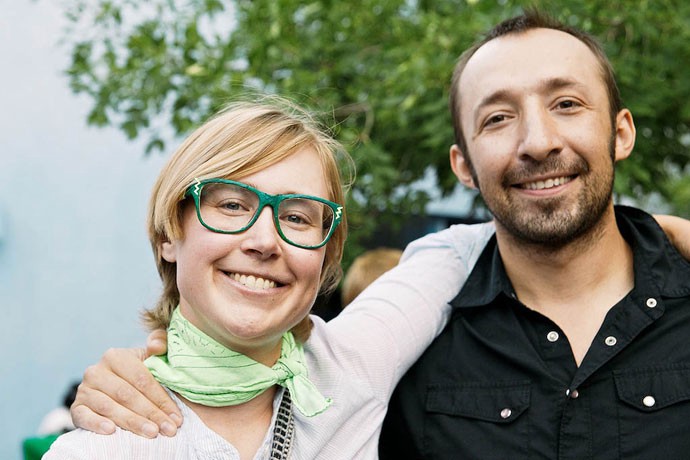
Heads near the top of the frame, out of the full sun, nothing too distracting behind them . . . guests at a MIX Santa Fe event I photographed over the summer
6) Get out of full sun
Especially here in bright New Mexico, shooting outdoors people outdoors in the daytime can be a real challenge. There’s such a contrast between the brightest areas of an image and the dark shadows, that most cameras struggle to capture the full range — either something will be blown out (full white, with no detail), or too dark. And nobody looks good squinting in bright light, or with ‘raccoon eye’ from strong shadows on their faces. So, if you can, photograph people in shade, where they’re looking towards the light. This will mean there’s an even light on them, which is much more flattering, and that they’ll likely have catchlights — little bright spots in their eyes, which bring the images to life.
7) Mix up the range of shots
If you’re shooting an event, make sure to get a range of different types of images. So that could include individual portraits, couples, larger groups, a wide shot of the whole event (sometimes standing on a table or looking for a higher vantage point will help here), and some detail shots (if there’s some nice food on offer, get some images of the spread). Also mix up the landscape (horizontal) shots with the portraits (verticals). Depending on what you’ll be using the images for, being able to give the person laying out the blog post or designing the newsletter a good choice of images can really help.

A details shot from the MIX Santa Fe event.
8) Try not to use the flash
Most cameras built-in flashes make people look washed out and ghostly. The light hits the subject full in the face, and often the background disappears to black — it’s not a good representation of the actual scene. If it’s not too dark, switch the flash off and depending on your camera’s settings also try increasing its ISO (how sensitive the camera is to light). If your images are coming out blurry (because the camera has to use a slow shutter speed to let in enough light for a decent exposure), then you’ll have to turn the flash on, and live with what you get (see the last point on what a good camera can give you).
8) Do some processing afterwards
This is one of the main reasons professionals’ images look much better than amateurs — the pros work on the images after the fact. A bit of time spent cropping some images, or adjusting the contrast or exposure on others can really make a difference. Most pros shoot RAW images, which give greater leeway for adjustments, but even if you’re shooting JPGs, a bit of time improving the images you know you’ll be using can really help. On the Mac, the free iPhoto program can do a good job, but if you’re going to taking a lot of images a program like Apple’s Aperture or Adobe’s Lightroom will give you more powerful adjustment and organizing tools to help you manage your images.
9) You don’t need a good camera, except when you do
For a lot of daytime images, pretty much any camera will give you an acceptable image, there are a few situations where a good camera can get a shot that you just can’t with a phone camera or a point-and-shoot. If you really want a blurred background and the subject in focus, you’ll need a camera with a larger-sized sensor (at least Micro 4/3rds but APS-C or full-frame are better), and a lens with an aperture of around f/2.8 or below (depending on its focal length).
Similarly, these type of features will help you get images in low-light without a flash. For the image at the top of the page — an architects’ event I shot for the local chapter of the American Institute of Architects — I used a Canon 5D MkII and a 50mm f/1.4 prime lens (and wall to put the camera on). Such a shot would have been almost impossible with more consumer-focussed cameras.
If you’re taking shots of fast-moving subjects (sports, or kids for example), you’ll need a camera that focuses quickly and has no shutter lag — so when you press the button, the shutter opens almost instantly.
Time for the professionals
There are times when you need both a good camera and a good photographer behind it. Sometimes what seems like an ordinary location — like a hotel conference room, for example — can have shocking light and be very difficult to shoot in. Or you have just a couple of minutes to get a good image or an important person giving a speech. Or you’re looking for a particular powerful image to use prominently in campaigns. Or you don’t have the time to shoot and edit hundreds of photos from an event because you’re busy hosting the event . . . you get the idea.
Even in more benign circumstances, a professional will almost always deliver a better set of images than the ones you’ll be able to get. Here’s the full set of images I took at that MIX event I’ve mentioned as an example — they present a good picture of a hip summer event instead of looking like a set of party snaps made with a cellphone.
So sometimes you really should call a professional, but other times if you can take these points to heart, you’ll end up with good images for your site or social media needs. If you have any specific questions, feel free to comment below and I’ll try and answer them for you.
- — As well being a professional photographer available for work in New Mexico and elsewhere, I also teach workshops on taking better photos for social media and your site. Get in touch if you’d like more information or you have a project you think would be up my street.

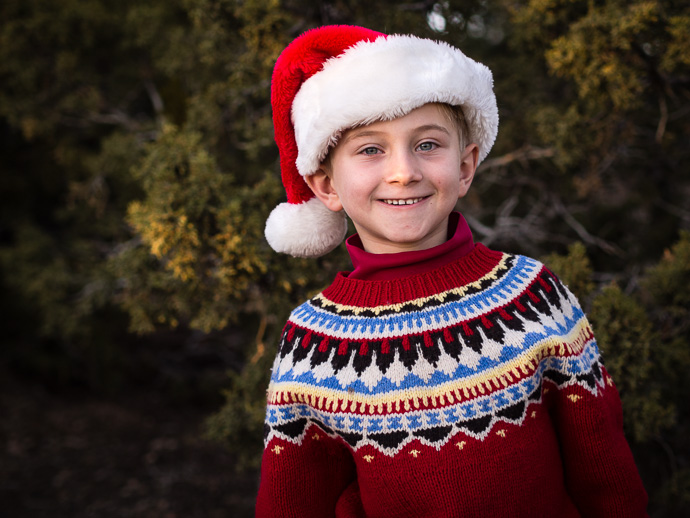
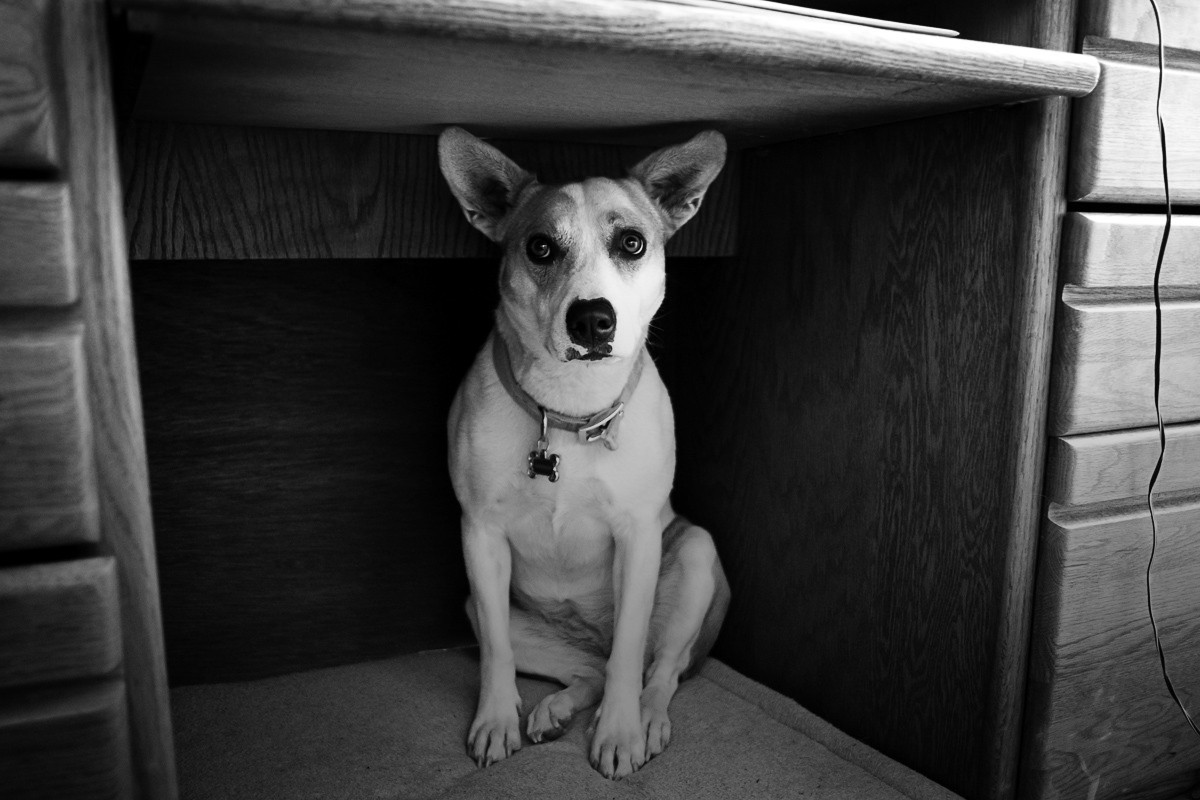
 “When I die, I want to come back as a dog and get to stay here,” Leroy from
“When I die, I want to come back as a dog and get to stay here,” Leroy from 





